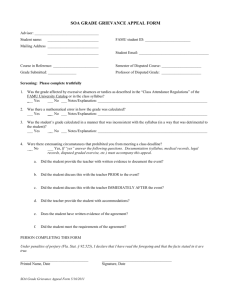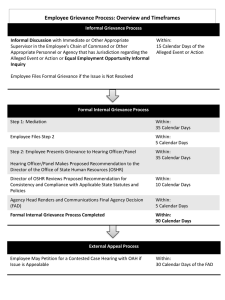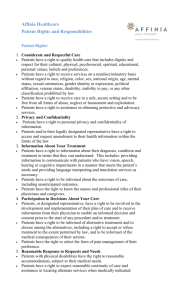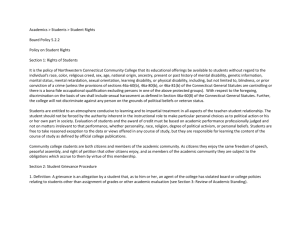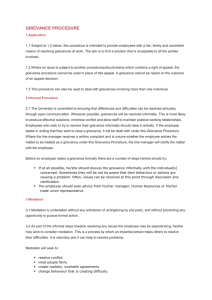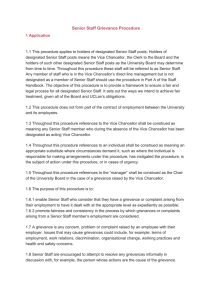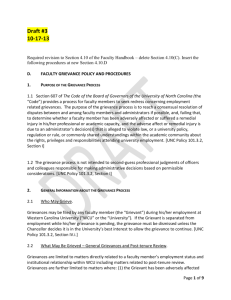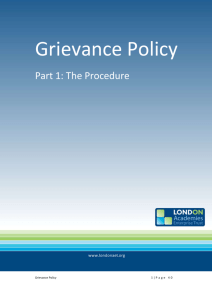See – Guidance - Steps for Conducting a Grievance
advertisement
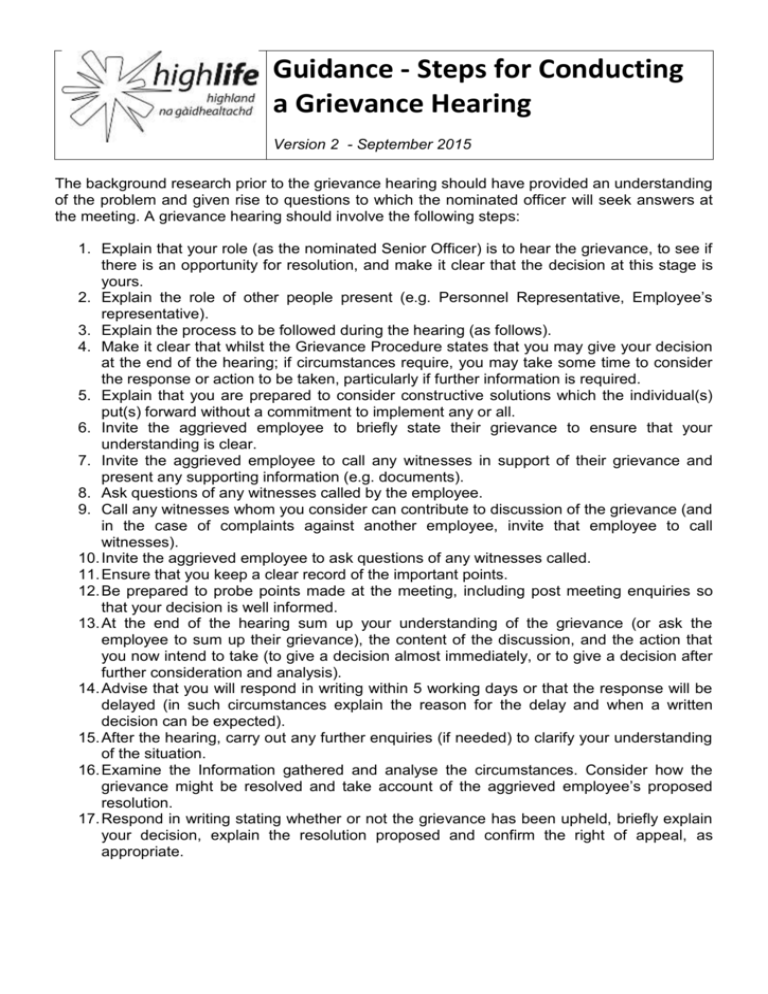
Guidance - Steps for Conducting a Grievance Hearing Version 2 - September 2015 The background research prior to the grievance hearing should have provided an understanding of the problem and given rise to questions to which the nominated officer will seek answers at the meeting. A grievance hearing should involve the following steps: 1. Explain that your role (as the nominated Senior Officer) is to hear the grievance, to see if there is an opportunity for resolution, and make it clear that the decision at this stage is yours. 2. Explain the role of other people present (e.g. Personnel Representative, Employee’s representative). 3. Explain the process to be followed during the hearing (as follows). 4. Make it clear that whilst the Grievance Procedure states that you may give your decision at the end of the hearing; if circumstances require, you may take some time to consider the response or action to be taken, particularly if further information is required. 5. Explain that you are prepared to consider constructive solutions which the individual(s) put(s) forward without a commitment to implement any or all. 6. Invite the aggrieved employee to briefly state their grievance to ensure that your understanding is clear. 7. Invite the aggrieved employee to call any witnesses in support of their grievance and present any supporting information (e.g. documents). 8. Ask questions of any witnesses called by the employee. 9. Call any witnesses whom you consider can contribute to discussion of the grievance (and in the case of complaints against another employee, invite that employee to call witnesses). 10. Invite the aggrieved employee to ask questions of any witnesses called. 11. Ensure that you keep a clear record of the important points. 12. Be prepared to probe points made at the meeting, including post meeting enquiries so that your decision is well informed. 13. At the end of the hearing sum up your understanding of the grievance (or ask the employee to sum up their grievance), the content of the discussion, and the action that you now intend to take (to give a decision almost immediately, or to give a decision after further consideration and analysis). 14. Advise that you will respond in writing within 5 working days or that the response will be delayed (in such circumstances explain the reason for the delay and when a written decision can be expected). 15. After the hearing, carry out any further enquiries (if needed) to clarify your understanding of the situation. 16. Examine the Information gathered and analyse the circumstances. Consider how the grievance might be resolved and take account of the aggrieved employee’s proposed resolution. 17. Respond in writing stating whether or not the grievance has been upheld, briefly explain your decision, explain the resolution proposed and confirm the right of appeal, as appropriate. Grievance Issues – Process Stage Timescale - Stage 1 (Manager/Principal Manager) 1. Formal Grievance lodged (Nature of grievance and resolution sought) 2. Initial hearing/discussion 10 Working days from receipt of written statement (or otherwise by agreement). 3. Has an informal solution been attempted? 4. Is mediation possible? 5. Investigate issues 6. Is a hearing necessary? If so, must be held within one month of receipt of written statement. 7. Make decision 8. Inform employee 5 working days (maximum). 9. Is employee satisfied? 10 days to lodge appeal Stage 2 (Appeal to Head of Service) 1. Investigate issues 2. Is a hearing necessary? 10 Working days from receipt of appeal. 3. Make decision 4. Inform employee 5 working days (maximum). 5. Is employee satisfied? 10 days to lodge appeal Stage 3 (Appeal to Chief Executive) 1. Investigate issues 2. Is a meeting necessary? One month from receipt of appeal. 3. Make decision 4. Inform employee 5 working days (maximum).


